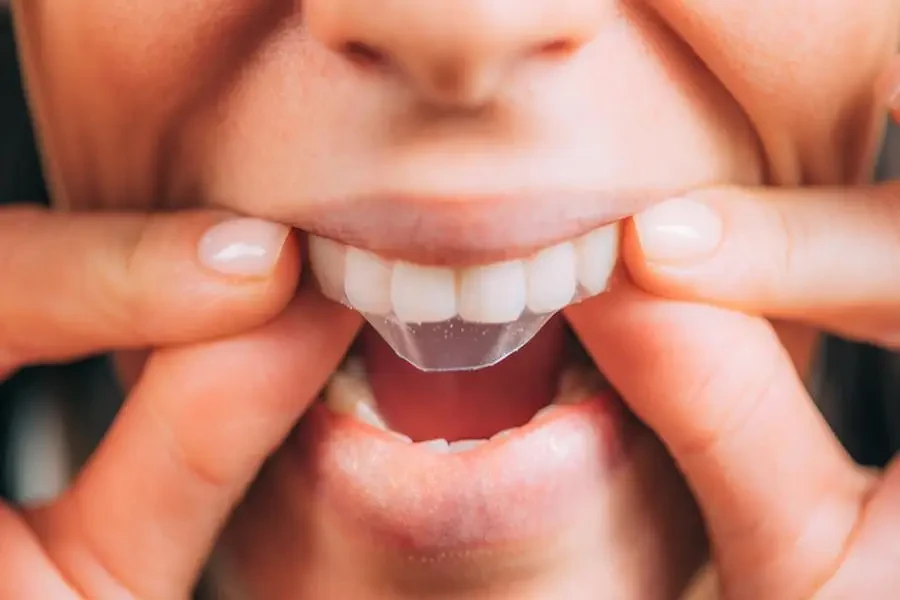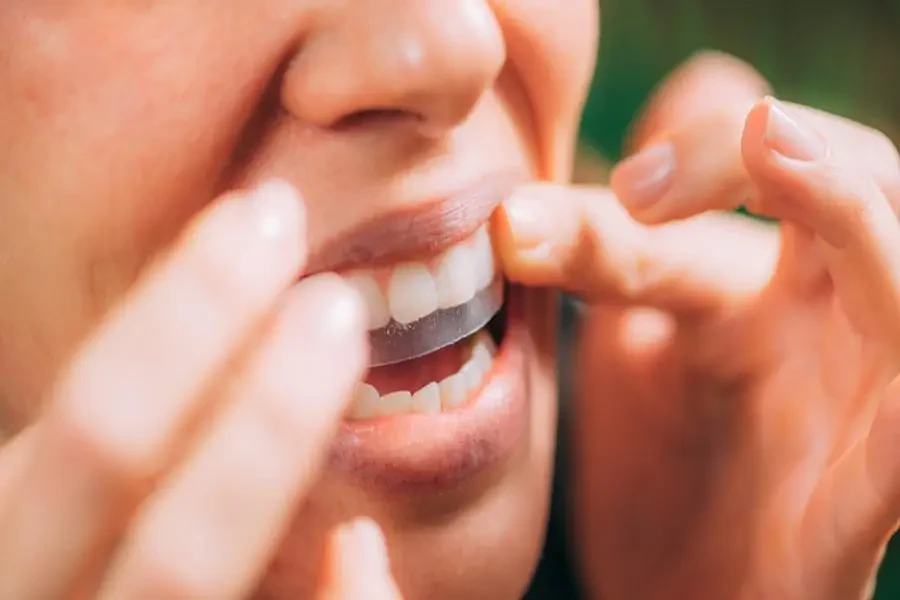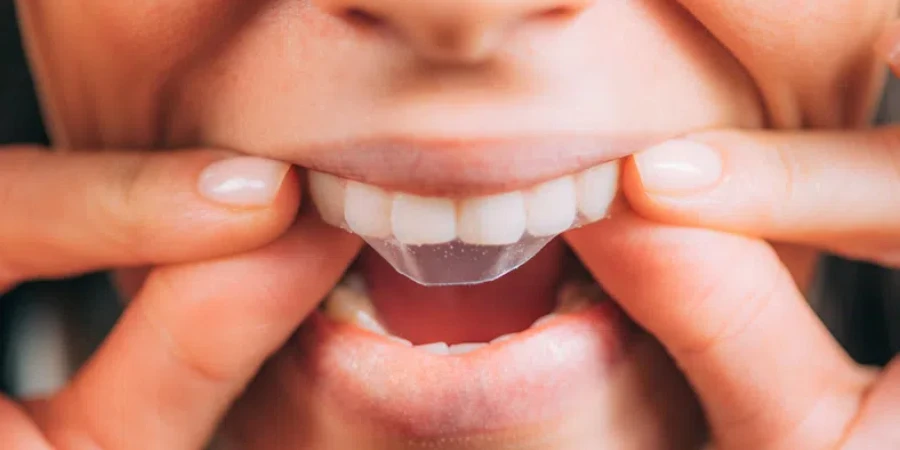Teeth whitening strips are a popular choice for many who want to achieve a brighter, more appealing smile. The convenience of whitening teeth at home appeals to consumers and professionals alike, and it’s for good reason. In this article, we’ll dive into what users care about when it comes to teeth whitening strips, and give you the information you need to be informed. From choosing the right whitening strips and determining their efficacy to understanding the safety involved, you’ll come out not only with a more appealing smile, but also with the knowledge of how to get it.
Table of Contents:
– What are teeth whitening strips and how do they work?
– The effectiveness of teeth whitening strips
– Safety considerations when using teeth whitening strips
– How to choose the right teeth whitening strips
– Tips for maximizing the benefits of teeth whitening strips
What are teeth whitening strips and how do they work?

Teeth whitening strips are thin, flexible pieces of plastic coated in peroxide-containing whitening gel (usually hydrogen peroxide or carbamide peroxide, which breaks down to release oxygen), which, upon contact with teeth, enters the porous enamel and dentin, lightening the colour of the tooth. While they can’t erase deep-set stains or those caused by genetics or medicine, they can significantly change the tone of a smile, and if you’re into this kind of thing, are one of the easiest ways to do it.
Knowing how teeth whitening strips work can help you set realistic expectations. You can use them at home but, depending on the original colour of your teeth and whether you have intrinsic or extrinsic stains, results may or may not be visible. Using a whitening strip regularly as directed can provide you noticeable results, so long as you don’t overdo it and cause sensitivity.
It’s no wonder that teeth whitening strips appeal to many people on the market for teeth-whitening products; you can swab them onto your teeth for just a few minutes a day, practically without slowing down your day’s normal activities, and still brighten your smile. They’re even fairly inexpensive. But they don’t always work. And when they do, it’s not always because the users trusted the same claims that helped them choose them in the first place. It might work – but it might not work as well as claimed, or as well on certain kinds of stains as on others. It might also require consistency of use, and might depend on aspects of the whitening gel itself.
The effectiveness of teeth whitening strips

Assuming you are answering a yes or no question, which isn’t always clear, the answer to whether or not teeth whitening strips work depends on your definition, whether you are asking about a specific type of stain, what concentration of whitening agent is used, and how often it is used. Overall, users observe a measurable whitening effect in their teeth, with the best results after a full treatment course.
Dental professionals are not supposed to allow consumers to have unrealistic expectations about the results of using teeth whitening strips. For some, they will dramatically lighten the appearance of stains on the surface of teeth, brought on by food, drink and smoking. Others may not respond as well to over-the-counter whitening products, especially if the stains are below the surface, or intrinsic (which many are) or if the person has taken certain antibiotics, or has an injury. Their response can also be affected by their dental hygiene practices and their other lifestyle choices.
People who want something more dramatic might have to consider alternative whitening treatments or even going to a dentist, but for most, strips are a cheap and effective way to get a brighter smile.
Safety considerations when using teeth whitening strips

Although they are considered safe by the Food and Drug Administration (FDA) for most users, when people are about to use teeth whitening strips, it is recommended that they are aware of potential side effects and safety considerations.The most common side effect is tooth sensitivity that can happen if the whitening agent can get through the tooth enamel to dentin, which is the layer beneath enamel. Gum irritation is another potential side effect and can happen if the strips are applied incorrectly or if they come into extended contact with the gums.
Remember, to limit the chances of irritation and sensitivity, use such a product according to the instructions and avoid overuse. If you experience significant discomfort or other adverse reactions, stop use and consult with a dentist.
There is also the issue of whether teeth whitening strips are safe in light of dental health. Anyone with pre-existing dental conditions such as cavities or periodontal disease (gum disease) should see a dentist before whitening, and make sure their gums and teeth are in a state where whitening products will not worsen any existing conditions.
How to choose the right teeth whitening strips

There are a few important considerations when choosing the best teeth-whitening strips for you including: the whitening agent concentration, the length of your treatment, and if you have any special dental issues, as well as your personal preferences. Also, researching and comparing teeth-whitening strips can guide you in making a more educated purchase.
I will read product reviews and ask my dentist for recommendations to find one that will be safe and effective, and I will also consider how easy they are to use and how comfortable they will feel on my teeth.
Ultimately, the teeth whitening strips that are right for you will depend on your particular needs, wants and dental health. Spending the time to choose a product that is right for you may help you achieve your goals for your smile, minimise the risk of side-effects or dissatisfaction.
Tips for maximizing the benefits of teeth whitening strips

Teeth whitening strips can help you achieve optimum results, but make sure you follow the product instructions carefully so they can work to their best ability. You can also aid the effectiveness of your whitening strips by practising a good oral health routine, which includes brushing and flossing twice daily to help keep surface stains away and new ones from forming. You can also prevent stains by avoiding or cutting down on foods and drinks that can stain your teeth, such as coffee, tea and red wine.
We recommend that you apply the whitening strips consistently for the length of time recommended by your manufacturer until the end of your course of treatment, and take ‘before’ and ‘after’ photos to track your progress and motivate you to make it to the end.
In combination with proper oral hygiene and lifestyle changes, you can achieve a brighter, more confident smile. However, although whitening strips can make dramatic improvements, it is important to have realistic expectations and seek a dentist’s opinion when needed.
Conclusion
Teeth whitening strips are a great way to get a brighter smile without visiting a dentist, or having to undergo a more involved treatment. In this article we cover how the strips work, what to expect in terms of effectiveness and safety, and tips on getting the best product for you so you can get the healthy, white smile you’re looking for.




